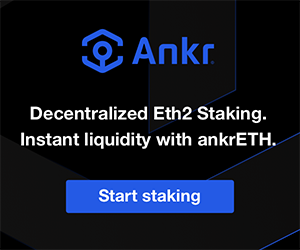
Key Takeaways
- Vesper Finance is a yield aggregator that aims to provide a safe way to earn interest on crypto assets.
- Vesper stands out for its conservative “move slow and don’t break things” ethos.
- The two-part design and modular and multi-pool architecture differentiate Vesper’s technology from other similar products on the market.

Vesper Finance is a yield aggregator offering an accessible, secure, and conservative experience for DeFi newcomers and institutions. It aims to provide a suite of yield-generating products that allow users to deposit and grow their crypto assets in a safe, set-and-forget way.
Vesper Finance Explained
DeFi is moving at breakneck speed in terms of development and innovation. Unlike traditional finance that tends to work in silos, DeFi is open and prides itself on being inclusionary and cooperative. This hardcoded ethos begets permissionless, combinatorial innovation where developers collaborate, build upon, and even fork each other’s projects to drive unprecedented organic growth and collectively propel the space forward.
The present modus operandi, however, is a double-edged sword that comes with significant risks and a steep learning curve for the average user. While DeFi’s “test in production” mentality may give it a substantial edge over its traditional counterpart in terms of nimbleness and pace of innovation, it often translates into heightened security risks and inability to catch up for the average user, leading to paralyzing feelings of being left behind.
Vesper Finance is an Ethereum-based DeFi project that seeks to alleviate these issues by adopting a more conservative approach—one much closer in ethos to Bitcoin‘s “move slow and don’t break things” philosophy than DeFi’s “test in production.” Perhaps ironically, this conservative approach is a breath of fresh air in the space and precisely what sets Vesper apart. With several yield aggregators on the market, Vesper’s economic moat lies in optimizing for simplicity, security, and longevity over time to market.
For the next edition of DeFi Project Spotlight, Vesper CEO and co-founder Jordan Kruger sat down with Crypto Briefing to discuss the project’s path so far, and what may lie ahead. Speaking of the motivation to build the protocol, she says that, being in DeFi since 2018, the team saw a need to professionalize yield farming and make DeFi more approachable. “We set out to create a DeFi super app, with the first product being the growth pools where users can deposit crypto and earn interest on their assets in a very passive manner,” she explains.
Vesper offers products tailored to users who are either new in DeFi or those who want a more passive option to participate. More importantly, Kruger emphasizes, Vesper is “for those who want something more secure and something that takes due diligence seriously.”

In principle, Vesper’s products work similarly to any other yield farming protocols on the market. Users deposit their tokens in one of the pools and the pools then automatically put their tokens to work in other DeFi protocols to generate passive returns—either in the deposited tokens (Grow pools) or in different tokens (Earn pools). In practice, though, there is much more to Vesper’s products than meets the eye.
What Makes Vesper Unique?
Besides the apparent distinction in ethos and building approach, Vesper also differentiates itself from other yield aggregators in its underlying technology.
Specifically, Vesper’s solution stands out for its modular and multi-pool architecture. The modular architecture means that pools can easily transition between investment strategies without requiring smart contract upgrades and capital migrations on behalf of users, while the multi-pool approach means that pools can run multiple strategies and farm on multiple protocols at the same time.

For example, Vesper’s wBTC front pool employs two different strategies in the background: the first deposits BTC as collateral on Maker to borrow DAI and then lends that DAI on Aave to earn interest, and the second deposits BTC straight to Aave and then reinvests or compounds the yield. Depending on which strategy produces the better yield at any time, the pool swaps and allocates capital between the two strategies to capture the highest returns possible.

Another unique aspect to Vesper is its approach to risk and security. Concerning risk, Kruger says that Vesper is unique in that it categorizes pools as “conservative” or “aggressive.” She explains:
“We’re taking it a step further and looking at the technical risk of the underlying strategies used. Those are not looking at the yield but the technical risk. Conservative pools use strategies by well-seasoned, audited protocols like Compound, Aave, Maker—the big ones that have been around for some time—while the aggressive pools may include strategies leveraging protocols that have not been in production for as long and may not have received audits.”
As for the approach to security, this is where the influence of Vesper’s co-founder and chief designer Jeff Garzik really shines through. Prior to Vesper, Garzik was one of the first Bitcoin core developers and the third-largest contributor to its code from when he started in 2010 through 2015. Unsurprisingly, then, Vesper’s modus operandi is to focus on due diligence and optimize for security over time to market, which explains why its products may be better-suited for investors with a low time preference. Speaking of Vesper’s approach to security, Kruger says:
“We do all the due diligence ourselves; this is what we mean by professionalizing DeFi. All our product releases go through a very rigorous testing schedule, where we do rounded internal testing before it goes to audits. Then after audits, it goes to beta, where we test the strategies live with our own capital, and then after two audits by reputable third-party auditors and beta testing, the products go to production.”
This conservative approach, focusing on accessibility, quality, and longevity, is how Vesper seeks to reach mainstream adoption and attract both newcomers to DeFi and institutions looking to capture some of DeFi’s high-yield opportunities.
Governance and Tokenomics
While Vesper was created and originally managed solely by the Bloq company, the project has always aspired to become a DAO that is entirely owned and operated by the community stakeholders. To that end, the founding team has been gradually relinquishing control over the protocol’s operations through phases of progressive decentralization.
Currently, the protocol’s governance is primarily in the hands of VSP token holders who can propose Vesper Improvement Proposals (VIPs) and direct the protocol’s development through Snapshot voting. Each user’s voting weight is denoted by their vVSP balance or the amount of VSP tokens staked in Vesper’s governance pool.
VSP represents the platform’s governance and fee-sharing token, which gives token stakers the ability to participate in decision-making through voting. Vesper’s tokenomics have been designed to create a sustainable economic model that converts participants and token holders into stakeholders by incentivizing liquidity provisioning and cutting them in on the revenue generated by the protocol.
Kruger says that the revenue model is something that the team has spent much time thinking about prior to launching. “Sustainability is one of the most important aspects to Vesper, and I think something that is really important to DeFi in general,” she explains.

The Future of Vesper Finance
Vesper’s roadmap plans include expanding the product suite beyond Ethereum to EVM-compatible blockchains, launching more Earn strategies on alpha, and launching more Grow pools and primitives like the VUSD stablecoin, the Vesper Fixed Rate Pool, and Vesper Lend.
The first Vesper Earn pool, which allows users to deposit Ethereum and earn yield in DAI, is already available in beta. Vesper’s Earn product is a new DeFi primitive which provides for what the team calls “programmable yield,” meaning the yield can be utilized in many different ways, including donating to charities or redirecting it to other pools for various purposes.
Looking forward, Kruger says that the team is building more Earn strategies and focusing on expansion. “I’m really excited about DeFi as it bridges into more chains and really becomes this multi-chain universe,” she says. “We’ve already launched Grow pools on Polygon, which is in beta, and I think this is precisely where we need to go in the space. Gas fees on Ethereum are too high, and we want to eliminate this barrier to entry.”
In conclusion, Vesper Finance is a unique project built by industry veterans that seeks to accomplish a very ambitious goal: becoming the 401(k) of crypto. On the surface, while it may look like any other DeFi yield farm in DeFi, deep down it is surprisingly novel, both in technology and ethos. If the past two years in DeFi have proven anything, it’s that it’s easy to fork code but impossible to fork talent and community—and that stands particularly true for Vesper. As DeFi continues to grow and march toward the mainstream, the pool of more conservative, passive investors with a lower time preference should continue to expand. And with that, so should Vesper’s potential market.


















